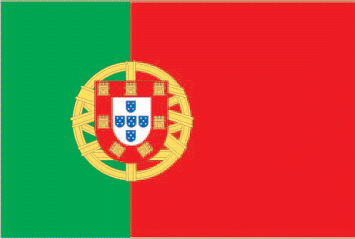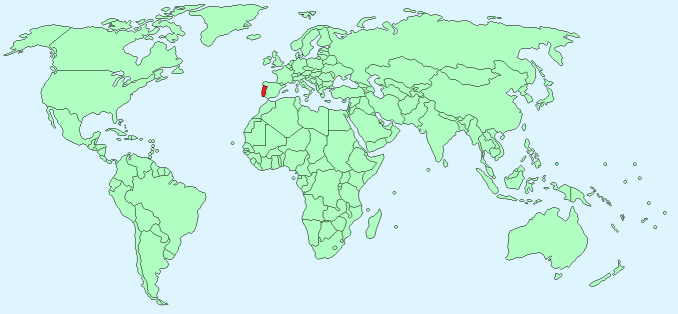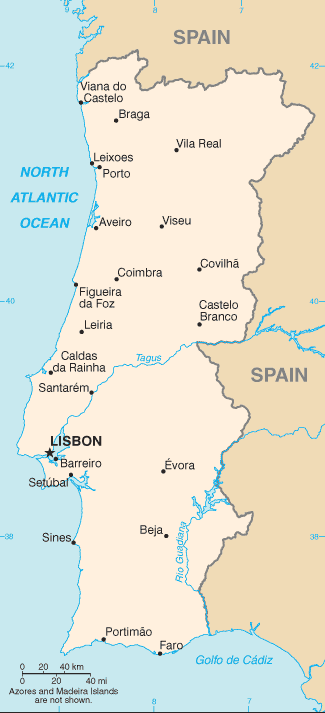Portugal


Continent – Europe
Region – Western Europe
Size – 92,090 km²
Geography – mountainous in the north, plains in south
Language – Portuguese, Mirandese
Religion – Roman Catholic 81%, Other Christian 3.3%, none 6.8%, other 8.9%
Monetary Unit – Euro
Natural Resources – fish, cork, iron ore, copper, zinc, tin, tungsten, silver, gold, uranium, marble, clay, gypsum, salt, arable land, hydropower
Agriculture – grain, potatoes, tomatoes, olives, grapes; sheep, cattle, goats, pigs, poultry, dairy products; fish
Industry – textiles, clothing, footwear, wood and cork, paper and pulp, chemicals, lubricants, automobiles and auto parts, base metals, minerals, porcelain and ceramics, glassware, technology, telecommunications; dairy products, wine, other foodstuffs; ship construction and refurbishment; tourism, plastics, financial services, optics

Neighbouring Countries – Spain
Population – 10,825,309 (2015 estimate)
Population Growth Rate – 0.09%
Average Life Expectancy – 79.16
Capital City – Lisbon (2,884,000)
Highest Mountain – Ponta do Pico (2,351 m)
Longest River – Tagus (716 km in Spain and Portugal)
Climate – Maritime in North – cool winters 5°C to 15°C, warm summers 14°C to 28°C, Mediterranean in South – mild winters – 10°C to 15°C, hot summers 20°C to 28°C
Yearly Rainfall – 55 cm (approx)
Plant Life – cork, birch, chestnut, oak, sycamore, thorn, heather, ferns, eucalyptus, olive, rosemary, thyme
Animal Life – wolves, lynx, fox, rabbit, hare, wild boar, wild cat, chameleons, mongoose
Bird Life – avocets, godwits, eagles, flamingos, buzzards, owls
Fish Life – sardine, sea bass
Harvard Reference for this page:
Heather Y Wheeler. (2015). Portugal. Available: https://www.naturalhistoryonthenet.com/Facts_Figures/Country_Facts/portugal.htm. Last accessed Tuesday, July 19, 2016
Facts and Figures Pages
